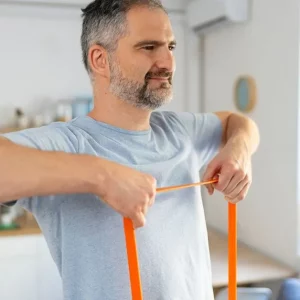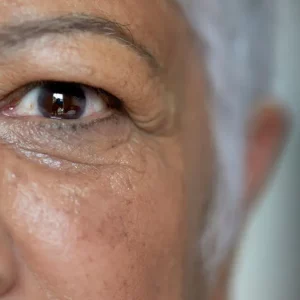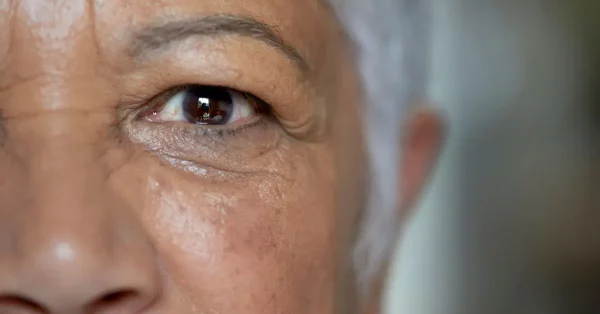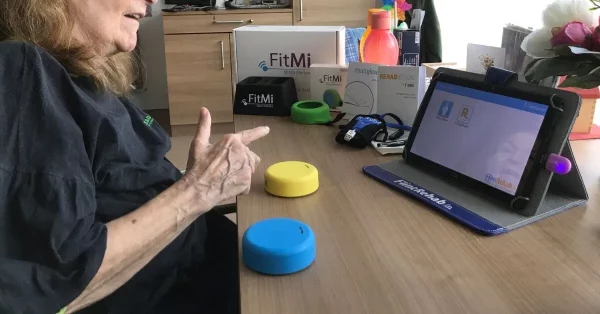There are many types of aphasia, which is a communication disorder caused by neurological injury. One type of aphasia, called transcortical sensory aphasia, can cause poor auditory comprehension. It most commonly occurs after damage to the temporal lobe.
Fortunately, the nervous system has a natural ability to heal and rewire itself after injury. This means that speech difficulties like transcortical sensory aphasia can often be rehabilitated, and this guide will walk you through the process.
Use the links below to jump straight to any section:
- Causes of Transcortical Sensory Aphasia
- Transcortical Sensory Aphasia Symptoms
- Diagnosing Sensory Aphasia
- Management of Transcortical Sensory Aphasia
- Understanding Transcortical Sensory Aphasia
Causes of Transcortical Sensory Aphasia
The process of language is complex. Different areas of the brain control different aspects of language, such as processing spoken words or understanding written words, for example.
The part of the brain responsible for comprehending language is known as Wernicke’s area and is located in the left temporal lobe.
When a temporal lobe stroke or brain injury damages the tissue surrounding Wernicke’s area, this can isolate it from the rest of the brain. As a result, problems with language comprehension can occur. Doctor’s call this type of language difficulty transcortical sensory aphasia.
The most common cause of transcortical sensory aphasia is a watershed stroke, which is a stroke that affects one or more of the watershed regions of the brain. These regions are located far from the major cerebral arteries in the brain. Because they are so isolated from the arterial supply, they are especially vulnerable to a decrease in blood flow.
The carotid artery is one of the main arteries that supply blood to the areas surrounding Wernicke’s area. Therefore, when a stroke occurs in this artery, it can severely damage these areas and lead to sensory aphasia.
Transcortical Sensory Aphasia Symptoms

Transcortical sensory aphasia (TSA) is essentially the opposite of motor aphasia. With this type, the person can still produce fluent speech. However, their speech might be ungrammatical and peppered with invented words. This can make it nearly impossible for others to understand.
TSA is most similar to Wernicke’s aphasia in that it impairs a person’s ability to comprehend spoken language. Unlike Wernicke’s aphasia, however, the person can repeat what they hear another say, although they do not understand it. Therefore, if you asked the person to say “I would like some water” they could repeat that phrase almost verbatim, but they would not comprehend what any of those words mean.
Sensory aphasia is caused by damage to the parts of the temporal lobe that surround Wernicke’s area. Other symptoms of transcortical sensory aphasia include:
- Reading difficulties
- Naming problems
- Paraphasia (error-prone speech)
- Echolalia (compulsively repeating what others say)
Like transcortical motor aphasia, TSA can vary in severity, depending on how extensive the brain damage is. For example, some patients might only have difficulty understanding long or complex sentences, while others might be unable to understand even simple words.
Diagnosing Sensory Aphasia
Sensory aphasia cannot be diagnosed using imaging techniques, because the results are often inconclusive. Therefore, neurologists or speech pathologists will typically administer oral speech evaluations to determine the patient’s type of aphasia.
One test commonly used in diagnosis is the Boston Diagnostic Aphasia Exam, which specializes in determining the severity of sensory aphasia. Therapists engage in conversation with the patient and observe their responses.
Once a diagnosis is made, the course of treatment can begin.
Management of Transcortical Sensory Aphasia

Therapists use a variety of techniques to improve auditory comprehension in transcortical sensory aphasia patients. These techniques include:
- Using common words
- Focusing more on concrete nouns rather than adjectives or adverbs
- Using gestures
- Using concise and grammatically simple sentences
- Speaking slowly and repeating themselves several times
It is critical for patients to begin speech therapy right away, as the sooner they begin therapy, the more likely they are to recover their language comprehension.
This can occur because the brain possesses a natural repair mechanism known as neuroplasticity. Neuroplasticity allows the brain to rewire itself and transfer functions from damaged areas to healthy ones. This can enable the person to regain their lost function.
The most effective way to engage neuroplasticity is through intensive repetition. Therefore, by practicing speech therapy, the patient can increase their chances of recovering their language comprehension.
To practice speech therapy every day, it can help to use speech therapy apps, such as the CT Speech & Cognitive Therapy App. This app was specially designed by speech therapists to improve a patient’s language production and comprehension skills and features over 100,000 customizable exercises.
Understanding Transcortical Sensory Aphasia
Damage to the temporal lobe surrounding Wernicke’s area can lead to transcortical sensory aphasia and cause a person to lose their ability to understand language. They also will struggle to produce meaningful words and phrases. However, they can still repeat words and phrases that they hear.
People with sensory aphasia might not realize they have any deficits, and might be confused about why they can no longer communicate. If left untreated, this can lead to feelings of isolation and depression.
If symptoms do not improve on their own, a speech therapist can help you find tactics to increase the person’s language skills. Intensive practice of speech therapy drills are the most effective ways to accomplish this, but there may also be other techniques that your therapist can suggest.










